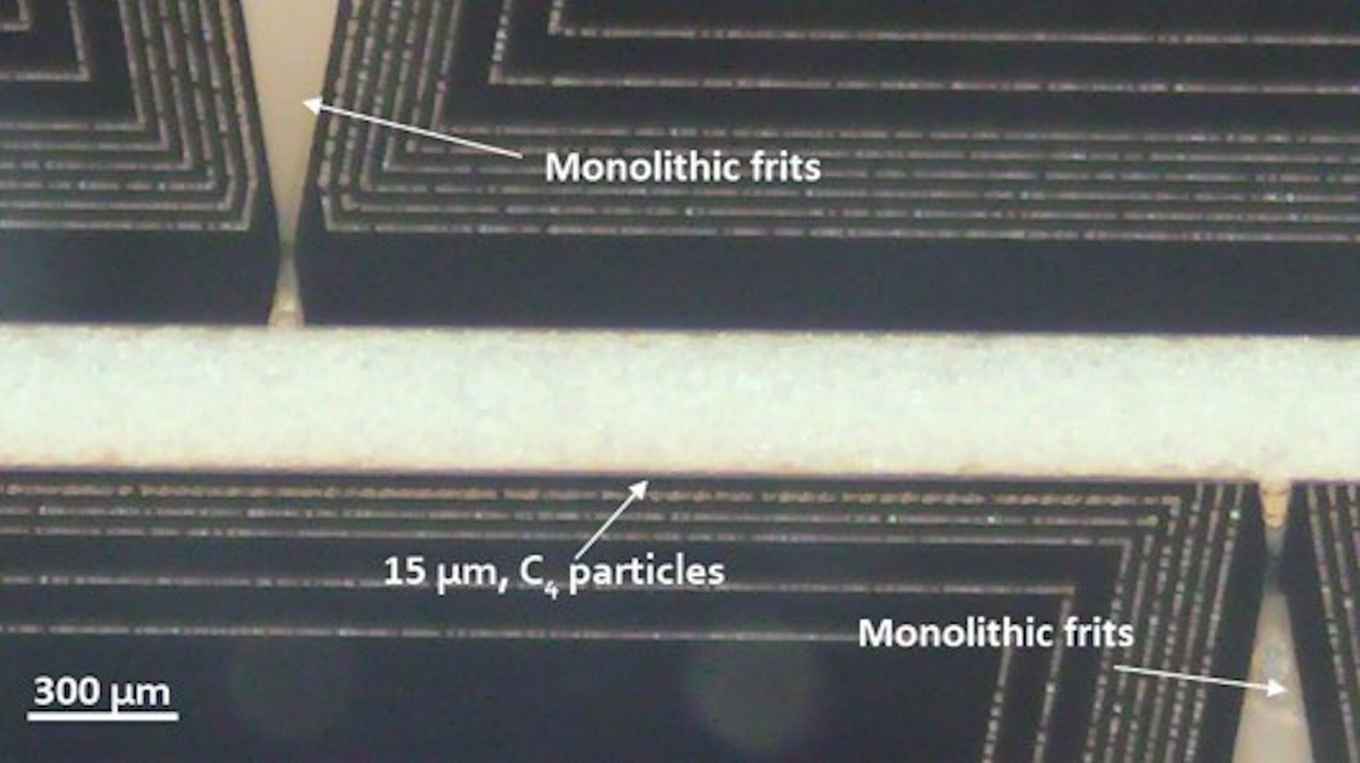Fabrication of monolithic features for chip-based multidimensional separation devices
9 February 2022

When using devices intended for multi-dimensional separations, controlling the boundaries between the different separation dimensions is critical. This is particularly relevant for maintaining clear definitions of the different stationary phases for each dimension. Using photo-masking and selective polymerization, the researchers were able to fabricate retaining frits on each side of the first-dimension separation channel. As a result, the packed bed of 15-micrometre particles in the first-dimension channel is maintained, enabling the separation of a standard peptide mix.
Abstract
In this work, devices for two-dimensional separations are considered. The device contains a flow distributor, a first-dimension channel, and 17 second-dimension outlets. In the design, all connections between the first-dimension channel, the flow distributor, and the second-dimension outlets were tapered, with a minimum diameter of 20 μm. The use of photo-masking is explored for the fabrication of monolithic frits in all tapered connections. Monolithic frits with optimized permeability and length were successfully fabricated in all 33 tapered channels through light-induced polymerization, photo-masking, and selective exposure.
The efficacy of the monolithic frits was demonstrated by creating a packed bed of 15-μm particles, confined within the first-dimension channel. The outlet of the first-dimension channel was successfully connected to a mass spectrometer. Effective flow confinement was demonstrated with a reversed-phase separation of a mixture of five standard peptides.
Publication details
Noor Abdulhussain. Suhas H. Nawada, Sinéad A. Currivan, Peter J. Schoenmakers: Fabrication of monolithic frits and columns for chip-based multidimensional separation devices. Journal of Separation Science, first published 23 January 2022. DOI: 10.1002/jssc.202100901
Links
- Research group Analytical Chemistry
- Centre for Analytical Sciences Amsterdam (CASA)